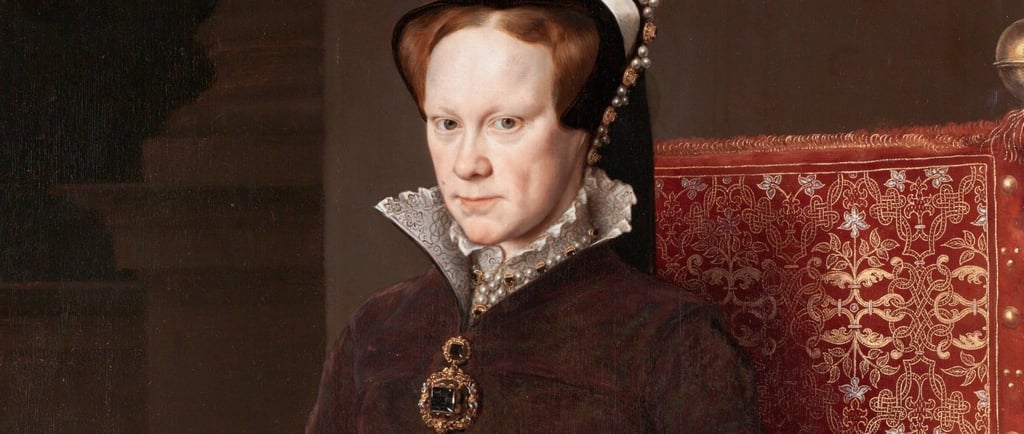The Symbolic Acts That Ended Mary I's Reign: A Study in Royal Funeral Traditions
When Mary I died in 1558, her Royal funeral became a masterpiece of political theatre. Discover how broken staves, royal effigies and Catholic rites orchestrated England's most dramatic religious transition.
TUDORWOMENS HISTORY
6/6/20254 min read


Introduction
The death of Queen Mary I on 17 November 1558 marked more than the end of a monarch's life—it represented the conclusion of England's last sustained attempt to restore Catholicism as the state religion. The funeral ceremonies that followed were carefully constructed rituals that served both to honour the deceased queen and to facilitate the transfer of power to her Protestant half-sister, Elizabeth I. These symbolic acts, rooted in centuries of tradition, provide valuable insight into how Tudor England managed political transitions during times of religious upheaval.
The Breaking of White Staves: Formal Dissolution of Royal Authority
The most significant ceremonial act performed during Mary I's funeral was the breaking of white staves by her household officers. At the conclusion of the funeral rites in Westminster Abbey, these officials ceremonially broke their staffs of office and cast the fragments into the queen's grave. This ritual served multiple symbolic purposes: it formally dissolved Mary's royal household, marked the definitive end of her reign and cleared the way for the establishment of Elizabeth I's administration.
The breaking of white staves was an ancient tradition in English royal funerals, representing the transfer of loyalty from the deceased monarch to their successor. The physical destruction of these symbols of office created a clear demarcation between one reign and the next, ensuring there could be no ambiguity about the end of Mary's authority.
The Royal Effigy: Maintaining Monarchical Presence
A life-sized wooden effigy of Mary I, complete with royal robes, crown, orb and sceptre, was placed atop her coffin during both the lying in state and the funeral procession. This practice addressed a crucial problem in monarchical succession: how to maintain the visible presence of royal authority during the period between a monarch's death and their successor's coronation.
The effigy served several important functions. It allowed the public to pay their respects to a recognisable representation of their queen, maintained the dignity of the monarchy during a vulnerable transition period and provided visual continuity of royal authority. For ordinary citizens lining the funeral procession route, the effigy was their final opportunity to "see" Queen Mary and acknowledge her reign.
Religious and Heraldic Symbolism
Mary I's funeral was notable for being the last English royal funeral conducted according to full Catholic rites. The ceremony incorporated traditional Catholic prayers, rituals and symbolism that reflected the religious character of her reign. The funeral setting displayed both Mary's personal heraldic symbols and those of her husband, Philip II of Spain, emphasising her political alliances and commitment to Catholic Europe.
This religious dimension was particularly significant given the religious reversals that had characterised the Tudor period. Henry VIII had broken with Rome, Edward VI had established Protestant practices, Mary had restored Catholicism and Elizabeth would soon establish the Protestant settlement that would define English religion for centuries to come.
The Transfer of Power: Coronation Ring and Succession
Whilst not part of the funeral ceremony itself, the immediate dispatch of Mary's coronation ring to Elizabeth at Hatfield House represents a crucial element in the transition of power. This act occurred immediately upon Mary's death and served as a tangible symbol of transferred authority. The coronation ring, which had represented Mary's sacred bond with her realm, now passed to her successor, ensuring continuity of monarchical authority even as religious and political policies were about to change dramatically.
The Funeral Sermon: Diplomatic Transition
Bishop John White of Winchester delivered the funeral sermon, which carefully balanced praise for Mary with acknowledgement of the coming transition. His description of Mary—"She was a king's daughter, she was a King's sister, she was King's wife. She was a Queen and by the same title a King also"—emphasised her legitimate claims to royal authority whilst his concluding prayer for Elizabeth's "prosperous reign in peace and tranquillity" explicitly recognised the transfer of power.
This sermon demonstrates the delicate diplomatic balance required during such transitions, honouring the deceased whilst preparing the way for potentially very different policies under the new monarch.
Historical Significance
These funeral rituals collectively accomplished several important objectives. They provided England with a dignified way to conclude Mary's reign whilst preparing for Elizabeth's rule. They honoured Mary's royal status and religious convictions whilst acknowledging that her policies would not continue. Most importantly, they demonstrated the power of traditional ceremonial forms to manage political change, even when that change involved fundamental shifts in religious and foreign policy.
The symbolic acts performed during Mary I's funeral illustrate how Tudor England used ritual and ceremony to navigate periods of significant political transition. These traditions provided stability and continuity during moments of potential uncertainty, ensuring that the transfer of power occurred smoothly despite the dramatic policy reversals that would follow.
Conclusion
Mary I's funeral represents a masterpiece of political ceremony, using ancient traditions to manage a complex transition between two very different visions of England's future. The broken staves, royal effigy, Catholic rites and diplomatic sermon all served to honour the past whilst preparing for a fundamentally different future. These ceremonies remind us that royal funerals have always been about more than honouring the dead—they are crucial moments when nations redefine themselves and power transfers from one vision to another.
Want to explore Mary I's story beyond the 'Bloody Mary' myth? Join author Amanda Schiavo and Yvette Reinfor from Hidden Tudors Tours for an immersive walk tour through historic Westminster, following in the footsteps of England's most misunderstood queen. Discover the sites of her coronation, final days and the complex woman behind the legend. Visit www.hiddentudorstours.co.uk to book your place on this immersive Tudor experience.
Explore
Discover the hidden stories of Britain's Tudors.
Connect
Subscribe to Newsletter
contact@hiddentudorstours.co.uk
+44 (0)203 603 7729
© 2025. All rights reserved.
